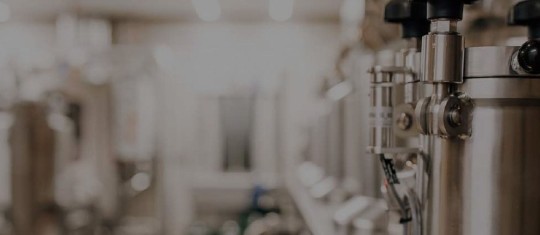Hop creep - the hidden, creeping, and unstoppable additional fermentation during dry hopping that time and again causes unpleasant surprises among brewers – can increasingly be brought under control. Recently, two studies measuring the diastatic power of hops have been published, shedding more light on this still very unusual phenomenon. Both scientific approaches give hope that hop creep is becoming less threatening and can soon be a predictable factor of any dry hopping process.
Influence of different hop varieties
Philip C. Wietstock, Timo Lützenberger, Martin Biendl and Brian Gibson have recently developed a method to quantify the diastatic activity of hops. The fact that not all hops have the same post-fermentation effect is known from previous studies. For example, the enzymatic power varies greatly depending on the hop variety. Kilning temperature also is a major factor: the higher the temperature, the lower the diastatic power of the hops. Likewise, the duration of storage has a major impact: the longer hop are stored, the more the enzymatic activities decrease.
In their search for a reproducible method, the scientists soon realized that beer wort was not the appropriate medium. The EBC Congress mashing process is a standardized process for wort production that can be used to determine the quality of malt. However, it is not possible to produce a standardized wort using this method as the mashing results depends on the types of malt used. Consequently, a reproducible, uniform polysaccharide source was needed: the scientists resorted to potato starch, with which they incubated various hop varieties in order to measure the diastatic activity. Based on a validated MEBAK method, the parameters including starch concentration, hop concentration and incubation temperature were optimized and defined for these purposes. The pH value was also investigated.
The glucose and maltose values resulting from starch degradation were compared with the amount of fermentable sugars of a lager beer also incubated with hops under the same conditions. The results correlated and confirm that this method is a promising way to quantify the diastatic power of hops. The method developed is a first draft, so implementation for laboratories still needs to be tested and validated. It can already be said that investigations using such a measurement method are too involved for most breweries.
Sensory analysis in the Hop Harvest Guide
For BarthHaas, on the other hand, this is an important topic. In our Harvest Guide, for example, we already investigate the quality of the current harvest every year. The sensory analysis of the aroma profiles in particular are very important in the Hop Harvest Guide, but also analytical data such as oil content and alpha acid. These are all parameters that are subject to harvest fluctuations. In the future, it would therefore be of great interest to us and brewers to obtain values and changes in the diastatic power of hops. The BarthHaas Brewing Solutions team is confronted with questions about hop creep on an almost daily basis. We have a few tips and tricks in our sleeves to combat this topic. Quantifying the diastatic power of defined hop batches would be a quantum leap in dealing with this issue.
Calculate and integrate the effect of hop creep
The second study is a practical method that allows brewers to calculate dextrin degradation from secondary fermentation and integrate the results into the brewing process. Using the ASBC method, the scientists Arnbjørn Stokholm, Lindsey N. Rubottom and Thomas H. Shellhammer carried out ASBC Wort-5 quick fermentations with and without dry hopping on a laboratory scale. They then compared the results with large-scale fermentations with the same wort, the same yeast, and the same hops. This enabled them to check the relevance of the lab results and determine the degree of correlation. In each case, the residual extract and the apparent degree of fermentation were measured in the laboratory after 48 and 72 hours. In fact, the results from rapid fermentation in the laboratory allowed conclusions to be drawn about the hop creep effect on a large scale.
This method is ideal for breweries that already have a laboratory and complete a small-scale fermentation ahead of the production fermentation in order to calculate dextrin degradation. In this process, 500 ml of the wort is fermented with yeast under constant stirring at 20 degrees Celsius. After 48 and after 72 hours, residual extract and apparent degree of fermentation are measured respectively. An additional five grams of hops are added to a second 500 ml sample. The worts are fermented and measured in the same way. The results make it possible to calculate dextrin degradation on a large scale. Such a procedure could be easily integrated into the ongoing operation.
Summary
Both methods serve different purposes: The measurements from the Wietstock method can provide an overarching outlook, for example, on what will happen in a crop year. In general, the influences of variety, crop year, processing, and storage conditions can be quantified in the future and, as a result, perhaps even controlled. But what exactly happens in the brewery will have to be investigated by each brewer themselves - because the hop-creep effect simply has too many variables. The Stockholm method, however, is a practical solution for this. And even if that still seems too complex, we, the BarthHaas Brewing Solutions team, can help with advice and support. We also offer brewers and professionals in the brewing industry seminars and workshops through our Hops Academy - interactive, effective and entertaining on all topics related to brewing with hops.
For the definition and remedy of hop creep, see also "How do hops react to climate change?".
Reference:
„A method for the determination of hop diastatic power – part 1”, P. C. Wietstock, T. Lützenberger, M. Biendl, B. Gibson, Brewing Science July/August 2021 (Vol. 74)
„Evaluating a benchtop fermentation method for estimating dextrin degradation by hop diastatic enzymes during dry-hopping”, A. Stokholm, L. N. Rubottom, T. H. Shellhammer, Brewing Science November/December 2020 (Vol. 73).


